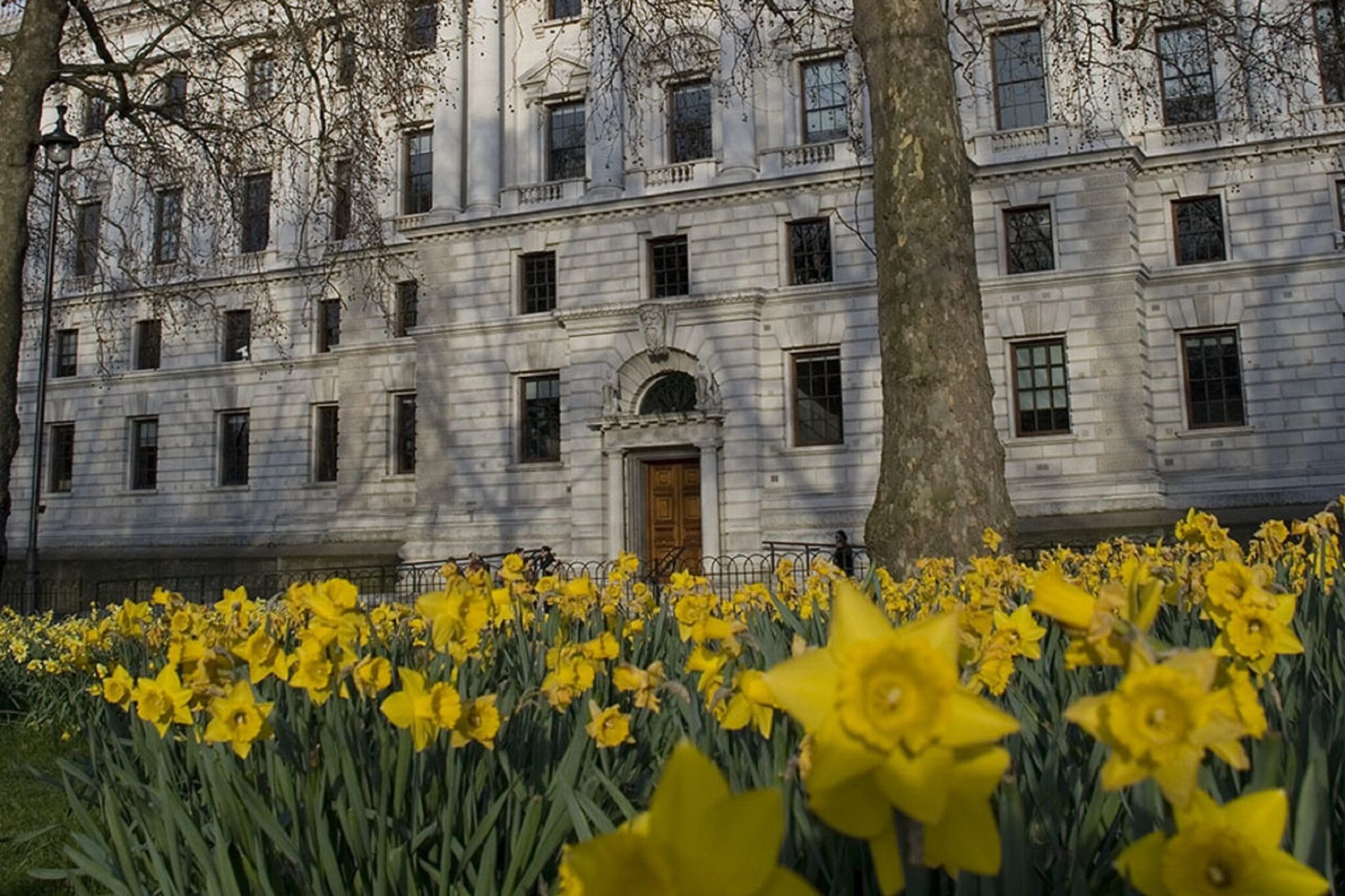Taxation
Spring Statement 2019
The Chancellor found himself presenting his second Spring Statement sandwiched between a series of crucial Brexit votes.
His speech was peppered with references to the need to achieve a smooth exit from the EU. Beyond that, Mr Hammond chose to keep the Statement a low-key affair.
The Spring Statement had no new tax proposals and indeed deferred any extension of Making Tax Digital (MTD). However, the Chancellor did introduce various consultations, early-stage discussion papers and calls for evidence. These covered a wide range of topics, stretching from a forthcoming review of the National Living Wage to the development of a low carbon Future Homes Strategy. One notable absentee from the Chancellor’s consultation list was the second part of the Office of Tax Simplification’s review of inheritance tax, which had been promised for Spring 2019.
The Statement was formally a response to the latest Economic and Financial Outlook from the Office for Budget Responsibility (OBR). This between-Budgets review contained mostly good news for the Chancellor, with forecasts of improved tax revenues and only a minor overall reduction to growth prospects.
In theory, the Chancellor now has about seven months to prepare for his Autumn Budget and issue many of his promised papers. In practice, it seems likely that the Brexit ‘cloud of uncertainty’ could constrain his actions again.
Economic Update
Mr Hammond is used to facing down calls to loosen the purse strings whenever he makes a formal statement to parliament. On this occasion, the Treasury had pre-empted the more-money pleas to some extent by stating “…there will now only be one major fiscal event each year”, i.e. the Autumn Budget.
The Chancellor had some other useful defences against spending demands. A Spending Review is due imminently, which we now know will cover three years (from 2020) rather than the more usual five years. There is also the matter of Brexit, which Mr Hammond assumed would end with an agreed deal “in the next few weeks”.
If Mr Hammond’s assumption about the Brexit outcome proves correct, the state of government finances suggests that there will be scope for extra spending. Last October, the OBR projected a government deficit of £25.5 billion for 2018/19, £16.4 billion (39%) lower than in 2016/17. A little under five months later, the OBR now thinks that the deficit will be a more modest £22.8 billion. The £2.7 billion drop is primarily due to higher than expected tax receipts. In particular, the all-important month of January produced a bumper £14.9 billion government surplus, helped by record self-assessment tax receipts of £21.4 billion.
This tax bounty has prompted the OBR to build assumptions of higher government revenue into its forecasts for the next five years, providing the Chancellor with some extra ‘wiggle room’. However, the OBR’s overall economic outlook has changed little since October, when the forecast was for 1.6% growth in 2019, followed by 1.4% in each of the next two years. The OBR has now revised those growth figures to 1.2% in 2019, 1.4% in 2020 and 1.6% in 2021 – slightly more pessimistic than the Bank of England’s latest forecast.
The Bank’s number-crunching, like the OBR’s, assumes “a smooth adjustment to new trading arrangements with the EU”. As at 13 March, that was by no means a certainty after the previous day’s ‘Meaningful Vote’ (mark II). It is little wonder Mr Hammond chose to keep the Spring Statement as close as possible to a fiscal non-event.
Announcements
The Chancellor announced several changes, including:
Making Tax Digital (MTD)
The government confirmed a light touch approach to penalties in the first year of MTD’s implementation. MTD will not be extended to any new taxes or businesses in 2020.
Apprenticeship levy
The timing of the reduction in the co-investment rate for employers from 10% to 5% and the increase to 25% in the amount that employers can transfer to their supply chains will be brought forward. These changes now take effect from April 2019.
Immigration controls – scientists and researchers
From Autumn 2019, PhD-level occupations will be exempt from the Tier 2 (General) cap. At the same time, the rules on 180-day absences will be changed so that researchers conducting fieldwork overseas will not be penalised if they apply to settle in the UK.
New export facility
UK Export Finance will introduce a new General Export Facility to provide more flexible short-term support to UK exporters and will publish further details once they become available.
Publications
The government published two documents outlining its existing approach to tax avoidance and related issues: Tackling tax avoidance, evasion and other forms of non-compliance and offshore tax compliance strategy, No Safe Havens 2019. The government also published for comment Structures and buildings allowance – draft legislation, on the new allowance for investments in non-residential structures and buildings announced in the 2018 Budget. It is intended to lay this legislation early this summer. The relief will be given as an annual 2% flat rate over 50 years for new commercial structures and buildings.
In the coming months, government publications will include:
- Review of time limits – a report on the time limits for the recovery of lost tax involving an offshore matter, comparing them with other time limits. It will set out the rationale for the charge on disguised remuneration loans and will be laid by 30 March 2019.
- Preventing abuse of the R&D tax relief for small- or medium-sized enterprises – a consultation on the application of the measure announced in the 2018 Budget.
- Child Trust Funds (CTF) – a consultation on maturing CTFs and the regulations to ensure that they can retain their tax-free status after maturity.
- VAT partial exemption and capital goods scheme: simplification – a call for evidence on potential changes to the VAT Partial Exemption regime and the Capital Goods Scheme.
- Social investment tax relief (SITR) – a call for evidence on the scheme, including why it has been used less than expected and its impact on finance for social enterprises.
- Enterprise investment scheme (EIS) approved funds guidelines – draft guidelines and draft legislation, with proposed HMRC policy and practice for approving EIS funds.
- CGT private residence relief – a consultation on the capital gains tax (CGT) changes announced in the 2018 Budget to lettings relief and the final period exemption.
Summaries of responses will be published to various consultations.
- Protecting your taxes in insolvency – the consultation followed the announcement in the 2018 Budget proposing to make HMRC a secondary preferential creditor for certain tax debts paid by employees and customers on insolvency business.
- Corporate capital loss restriction – the consultation was about a change announced in the 2018 Budget to restrict, from 1 April 2020, the amount of carried-forward capital losses a company can offset to no more than 50% of the chargeable gains arising in a later accounting period.
- Stamp taxes on shares consideration rules – the consultation was about the introduction of a general market value rule for transfers between connected persons, aligning the consideration rules for stamp duty and stamp duty reserve tax.
- Digital services tax – the consultation was on the s of the digital services tax that will take effect from 1 April 2020.
- Amendments to tax returns – there has been call for evidence on simplifying the process of amending a tax return.
2019/20 Changes Already Announced
From 6 April 2019, a raft of tax and other changes take effect, most of which date back to last October’s 2018 Budget. There are further important changes down the line in 2020. The Chancellor did not introduce any new tax measures in his Spring Statement, although he did announce a number of new consultations.
Income tax: UK
The personal allowance for 2019/20 will rise by 5.5% to £12,500 and the basic rate band will increase by 8.7% to £37,500 (outside Scotland), making the higher rate threshold (the sum of the two) £50,000. These increases are significantly higher than inflation.
Income tax: Scotland
The same personal allowance as in the rest of the UK will apply, but in Scotland a different set of rates and bands will again apply to non-savings, non-dividend income – primarily earnings.
Scottish taxpayers will continue to have five tax bands with the tax rates for 2019/20, as for 2018/19, ranging from 19% to 46%. The threshold for the higher rate of income tax (at 41%, not 40%) will remain unchanged at £43,430, which is £6,570 below the rest of the UK. Someone with earnings of £50,000 a year will have an extra income tax charge of £1,544 a year for being resident north of the border.
Income tax: Wales
The National Assembly for Wales now has the power to vary income tax rates (not bands), but for 2019/20 it has decided not to make any changes from the rates of the rest of the UK (excluding Scotland).
National insurance contributions
The national insurance contribution (NIC) thresholds will be increased by 7.9%. The upper earnings limit (for employees) and upper profits limit (for the self-employed) will rise to £50,000, matching the UK higher rate income tax threshold outside Scotland.
Class 2 NICs, which were due to cease in April, will survive until at least the end of the current parliament. The Class 2 rate for 2019/20 will be £3.00 per week.
Company cars
Company car tax will rise for all but the highest emission vehicles from 6 April 2019. The taxable cash equivalent percentages will all increase by three percentage points, subject to the current ceiling of 37% of list price.
The diesel surcharge will remain at 4% for diesel cars that do not meet the RDE2 emission standard (which in 2019/20 means almost every diesel car on the road). The maximum charge for diesels also stays at 37%.
The lower the level of emissions, the greater the impact. For example, the tax payable on the BMW i3 electric car will increase by almost a quarter as the scale percentage for CO2 emissions up to 50g/km rises from 13% to 16% in 2019/20. On the other hand, the extra 3% makes no difference to the owner of a BMW M3, which is already subject to the 37% maximum charge in 2018/19.
A more significant reworking of the scales is scheduled for 2020/21. The new structure covers CO2 emissions of up to 50g/km for hybrid and electric-only vehicles. The BMW i3 scale charge will then drop to 2%, as the table below demonstrates.
Low emission company car scale charges 2020/21
| Maximum electric range (miles) | Less than 30 | 30–39 | 40–69 | 70–129 | 130 or more |
| 0 CO2 emissions g/km | 2% | 2% | 2% | 2% | 2% |
| 1–50 CO2 emissions g/km | 14% | 12% | 8% | 5% | 2% |
Inheritance tax (IHT)
The residence nil rate band, which was introduced in 2017/18, will rise by £25,000 to £150,000 in 2019/20. The main nil rate band will remain at £325,000 – the level set in 2009.
In 2020/21, the residence nil rate band will reach £175,000.
Automatic pensions enrolment
The minimum contribution levels for workplace pensions operating under the automatic enrolment provisions will rise from 6 April 2019:
| 2019/20 | 2018/19 | |
| Earnings trigger for auto-enrolment | £10,000 | £10,000 |
| Employer minimum contribution | 3% of band earnings £6,136–£50,000 |
2% of band earnings £6,032–£46,350 |
| Employee contribution* | 5% of band earnings £6,136–£50,000 |
3% of band earnings £6,032–£46,350 |
| Total minimum contribution | 8% of band earnings £6,136–£50,000 |
5% of band earnings £6,032–£46,350 |
*Assuming employer pays minimum required by law
For many auto-enrolled employees the increased pension contribution will undo the effects of the changes to income tax and NICs. For example, in 2019/20 an English resident employee earning £27,000 a year will see an annual saving in income tax of £130 and an NIC saving of £24.96. But if their employer pays the minimum 3% contribution, the employee’s pension contributions net of tax relief) will rise by £331.33, leaving a net income loss of £176.37 – or £14.70 a month.
Worst affected outside Scotland are those earning £50,000 a year, who suffer from the higher contribution percentage, higher NIC and pension contribution thresholds plus a loss of higher rate relief. Their 2019/20 income tax saving is £860, while their NICs bill rises by £340.04 and their pension contributions (net of tax relief) rise by £1,028.84, producing a net income shortfall of £508.88 – £42.41 a month.
Pensions – the lifetime allowance
The lifetime allowance, which sets the effective maximum tax-efficient value of pension benefits, will rise in line with inflation from £1.03 million to £1.055 million for 2019/20. There is no corresponding increase to the annual allowance, which remains at a maximum of £40,000, subject to the taper and money purchase annual allowance rules.
Entrepreneurs’ relief
From 6 April 2019 entrepreneurs’ relief will change as follows:
- The minimum period throughout which the qualifying conditions for the relief must be met will increase from 12 to 24 months; and
- Individuals can qualify for the relief where their shareholding is diluted below the 5% qualifying threshold by the raising of new shares for commercial purposes after 5 April 2019.
Non-contractual termination payments
The income tax treatment payments in lieu of notice (PILONs) was overhauled from April 2018. While the first £30,000 of a non-contractual termination payment will continue to be tax-free, from 6 April 2020 employer NICs (but not employee NICs) will be charged on the excess over £30,000.
Capital gains tax (CGT) – residential properties
From 6 April 2020 there will be the following changes to CGT on residential property:
- UK residents making a chargeable disposal of residential property must deliver a return to HMRC, and pay the tax, within 30 days following completion;
- The estimated CGT due must be paid by the same date;
- Lettings relief of up to £40,000 will only be available where the owner of the property is in shared occupancy with the tenant; and
- The final period principal private residence exemption will be reduced from 18 months to nine months. The 36-month final period exemption will remain for disabled individuals or those in a care home.
Speak to one of our Capital Gains Tax advisers.
Venture capital trusts
The Finance Act 2018 made a range of revisions to the venture capital trust (VCT) legislation, not all of which took immediate effect. From 6 April 2019:
- The proportion of VCT funds that must be held in ‘qualifying holdings’ will increase from 70% to 80%; and
- The period for reinvestment of gains on disposal of ‘qualifying holdings’ will increase from six to 12 months.
Main Personal Allowances and Reliefs
| Main personal allowances and reliefs | 2019/20 | 2018/19 | |
| Personal allowance1 | £12,500 | £11,850 | |
| Marriage/civil partner’s transferable allowance | £1,250 | £1,190 | |
| Married couple’s/civil partner’s allowance at 10%2 (if at least one born before 6/4/35) |
maximumminimum | £8,915£3,450 | £8,695£3,360 |
| Blind person’s allowance | £2,450 | £2,390 | |
| Rent-a-room tax-free income | £7,500 | £7,500 | |
| Property allowance | £1,000 | £1,000 | |
| Trading allowance | £1,000 | £1,000 | |
1 Personal allowance reduced by £1 for every £2 of adjusted net income over £100,000
2 Reduced by £1 for every £2 of adjusted net income over £29,600 (£28,900 for 2018/19), until the minimum is reached
| High Income Child Benefit charge: 1% of benefit per £100 of adjusted net income between £50,000 and 60,000 |
Income Tax Rates and Bands
| UK excluding Scottish taxpayers’ non-dividend, non-savings income | 2019/20 | 2018/19 | |
| 20% basic rate on income up to: | £37,500 | £34,500 | |
| 40% higher rate on income over: | £37,500 | £34,500 | |
| 45% additional rate on income over: | £150,000 | £150,000 | |
| All UK taxpayers | |||
| Starting rate at 0% on savings income up to3 | £5,000 | £5,000 | |
| Savings allowance at 0% tax rate: Basic rate taxpayer Higher rate taxpayer Additional rate taxpayer |
£1,000 £500 £0 |
£1,000 £500 £0 |
|
| Dividend allowance at 0% tax – all individuals | £2,000 | £2,000 | |
| Tax rates on dividend income: | Basic rate | 7.5% | 7.5% |
| Higher rate | 32.5% | 32.5% | |
| Additional rate | 38.1% | 38.1% | |
3 Not available if taxable non-savings income exceeds the starting rate band.
| Trusts | |||
| Standard rate band generally | £1,000 | £1,000 | |
| Rate applicable to trusts: | dividends | 38.1% | 38.1% |
| other income | 45% | 45% | |
| Non-domicile remittance basis charge after UK residence in at least: | 19/20 | 18/19 | |
| 7 of the last 9 tax years 12 of the last 14 tax years |
£30,000 £60,000 |
£30,000 £60,000 |
|
Scottish Income Tax Rates and Bands
The Scottish Budget on 12 December 2018 set new thresholds for the devolved Scottish tax rates.
| Scottish taxpayers – non-dividend, non-savings income | 2019/20 | 2018/19 |
| 19% starter rate on income up to | £2,049 | £2,000 |
| 20% basic rate on slice of income up to | £12,444 | £12,150 |
| 21% intermediate rate on next slice up to | £30,930 | £31,580 |
| 41% higher rate on next slice up to | £150,000 | £150,000 |
| 46% top rate on income over | £150,000 | £150,000 |
Registered Pensions
| 2019/20 | 2018/19 | |
| Lifetime allowance | £1,055,000 | £1,030,000 |
| Money purchase annual allowance | £4,000 | £4,000 |
| Annual allowance4 | £40,000 | £40,000 |
| Annual allowance charge on excess | Applicable tax rate on earnings | |
| Lifetime allowance charge if excess is drawn | As cash 55%; as income 25% | |
| Max. pension commencement lump sum | 25% of pension benefit value | |
4 Reduced by £1 for every £2 of adjusted income over £150,000 to a minimum of £10,000, subject to threshold income being over £110,000
Property Transaction Taxes
Property transaction taxes use different rates and names depending on where in the UK a purchase takes place.
| Stamp Duty and SDRT: stocks and marketable securities | 0.5% |
| Second residential and all corporate residential properties £40,000 or more – add 3% to relevant SDLT/LTT rate(s) and 4% to LBTT rate(s) | |
| England & N Ireland – Stamp Duty Land Tax (SDLT) on slices of value | |||
| Residential property | % | Commercial property | % |
| Up to £125,000 | 0 | Up to £150,000 | 0 |
| £125,001 – £250,000 | 2 | £150,001 – £250,000 | 2 |
| £250,001 – £925,000 | 5 | Over £250,000 | 5 |
| £925,001 – £1,500,000 | 10 | ||
| Over £1,500,000 | 12 | ||
| First-time buyers: 0% on first £300,000 for properties up to £500,000 | |||
| Residential properties bought by companies etc over £500,000 – 15% of total consideration, subject to certain exemptions | |||
| Scotland – Land and Buildings Transaction Tax (LBTT) on slices of value | |||
| Residential property | % | Commercial property | % |
| Up to £145,000 | 0 | Up to £150,000 | 0 |
| £145,001 – £250,000 | 2 | £150,001 – £250,000 | 1 |
| £250,001 – £325,000 | 5 | Over £250,000 | 5 |
| £325,001 – £750,000 | 10 | ||
| Over £750,000 | 12 | ||
| First-time buyers: 0% on first £175,000 | |||
| Wales – Land Transaction Tax (LTT) on slices of value (from 1/4/18) | |||
| Residential property | % | Commercial property | % |
| Up to £180,000 | 0 | Up to £150,000 | 0 |
| £180,001 – £250,000 | 3.5 | £150,001 – £250,000 | 1 |
| £250,001 – £400,000 | 5 | £250,001 – £1,000,000 | 5 |
| £400,001 – £750,000 | 7.5 | Over £1,000,000 | 6 |
| £750,001 – £1,500,000 | 10 | ||
| Over £1,500,000 | 12 | ||
National Insurance Contributions
| 2019/20 | 2018/19 | |||
| Class 1 (Employees) | Employee | Employer | Employee | Employer |
| NIC rate | 12% | 13.8% | 12% | 13.8% |
| No NICs for younger employees5 on the first | £166 pw | £962 pw | £162 pw | £892 pw |
| No NICs for employees generally on the first | £166 pw | £166 pw | £162 pw | £162 pw |
| NICs rate charged up to | £962pw | No limit | £892 pw | No limit |
| 2% NICs on earnings over | £962pw | N/A | £892 pw | N/A |
| Certain married women | 5.85% | 13.8% | 5.85% | 13.8% |
5 Employees generally under 21 years and apprentices under 25 years
| 2019/20 | 2018/19 | ||||||||
| Employment Allowance | £3,000 | £3,000 | |||||||
| Not available if the sole employee a director | |||||||||
| 2019/20 | 2018/19 | ||||||||
| Limits and thresholds | Weekly | Annual | Weekly | Annual | |||||
| Lower earnings limit | £118 | £6,136 | £116 | £6,032 | |||||
| Primary threshold | £166 | £8,632 | £162 | £8,424 | |||||
| Secondary threshold | £166 | £8,632 | £162 | £8,424 | |||||
| Upper earnings limit (and upper secondary thresholds6) | £962 | £50,000 | £892 | £46,350 | |||||
6 Employees generally under 21 years and apprentices under 25 years
| Class 1A Employer | 2019/20 | 2018/19 | ||||||||
| Most taxable employee benefits | 13.8% | 13.8% | ||||||||
| Class 2 (Self-employed) | 2019/20 | 2018/19 | ||||||||
| Flat rate | £3.00 pw £156.00 pa | £2.95 pw £153.04 pa | ||||||||
| Small profits threshold: no NICS if profits do not exceed | £6,365 pa | £6,205 pa | ||||||||
| Class 4 (Self-employed) | 2019/20 | 2018/19 | ||||||||
| On profits | £8,632 – £50,000 pa 9% | £8,424 – £46,350 pa 9% | ||||||||
| Over £50,000 pa 2% | Over £46,350 pa 2% | |||||||||
| Voluntary | 2019/20 | 2018/19 | ||||||||
| Flat rate | £15.00 pw £780.00 pa | £14.65 pw £761.80 pa |
||||||||
Copyright 13 March 2019. All rights reserved. This summary has been prepared very rapidly and is for general information only. You are recommended to seek competent professional advice before taking or refraining from taking action on the basis of the contents of this publication. The guide represents our understanding of the law and HM Revenue & Customs practice as at 13 March 2019, which are subject to change.





